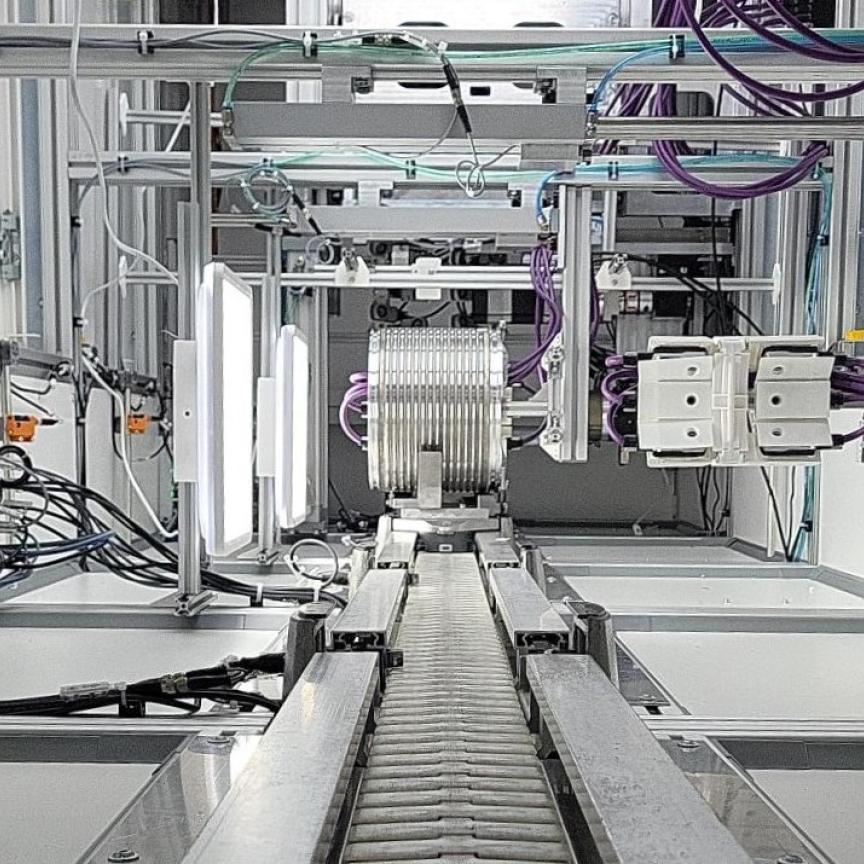Scientists have demonstrated what they believe is the first implementation of quantum computer vision for a quality inspection problem on a manufacturing production line.
Researchers at Multiverse Computing, which delivers quantum computing solutions, and Ikerlan, a technology transfer centre in Spain, developed a quantum-enhanced kernel method for classification on universal gate-based quantum computers, as well as a quantum classification algorithm on a quantum annealer.
The team found that both algorithms outperformed neural network approaches for classifying manufacturing defects.
Victor Onofre, quantum software developer for Multiverse Computing and one of the authors of the research paper, told Imaging and Machine Vision Europe that the team's approach offers a training time of only six minutes with inference times of two seconds on average. The CNN comparison approach, on the other hand, has training times of hours with many parameters involved.
Onofre noted that the quantum algorithms the team developed need less parameter tuning, are more accessible for modification and improvement, and are more interpretable when compared to a CNN.
'We have demonstrated a significant improvement in the capacity of detecting defects, both in precision and number of detected defects, using two quantum machine learning models compared to the classical counterparts,' Onofre said. 'These findings show the potential of quantum algorithms for taking computer vision performances to the next level.'
The quantum vision system was benchmarked against classical counterparts for an unbalanced dataset of images from the GDXray+ public dataset. This dataset consists of X-ray images of fractures in manufactured car parts.
Onofre explained that the pipeline for quantum machine learning algorithms is designed very similarly to the ones used in classical machine learning: there is data preprocessing, training, fitting, and inference stages.
'Once the mathematical model amenable to be trained on quantum hardware has been developed, the integration is done like industry standard ML pipelines, with the quantum parts of the code securely sent to be run on the quantum hardware of choice, instead of to standard CPUs or GPUs,' he said. 'Most importantly, the end user will have a product that can be used the same way as the current ML models, with the quantum parts working behind the scenes.'
He added that the key difference in algorithm development is that it requires a combination of various frameworks, from quantum physics to computer science and mathematical modeling. 'It is essential to build a collaborative and interdisciplinary workforce where people with different backgrounds combine their skills to create new solutions to real industry problems, manufacturing being one of them,' Onofre advised. 'This is the type of talented and diverse workforce that Multiverse Computing is building.'
Onofre said that quantum annealers are the most advanced type of hardware for difficult optimisation problems, and gave the best results in the study.
'We are in a critical moment for quantum technologies,' Onofre observed. 'Multiple companies realise the potential of quantum algorithms and are building their quantum journeys through real use-case projects and roadmaps for implementation into their pipelines.'
Quantum hardware is expected to advance rapidly over the next few years, and Onofre said that the availability of quantum models depends on the improvement of quantum hardware. However, Multiverse is also working with quantum-inspired algorithms, like Tensor Networks, which use a mathematical framework from quantum physics and so are particularly suited to handling large and complex amounts of data, but are able to run on CPUs or GPUs.
Onofre said that these techniques can add business value to real use cases right now, in manufacturing, finance, and general machine learning applications, as they are independent of the development of quantum hardware. 'These algorithms are being intensively researched and developed by Multiverse, showing a clear advantage over state-of-the-art classical methods, for example in reducing drastically the number of parameters and massively improving the training speed of industry deep learning models,' Onofre said.
The co-authored paper, titled ‘Quantum artificial vision for defect detection in manufacturing’, shows examples of the images analysed by the quantum algorithms and further details the context, metrics and methods used by the researchers.
Ion Etxeberria, CEO of Ikerlan, said in statement: ‘This collaborative study confirmed the benefits of applying quantum methods to real-world industrial challenges. We strongly believe that quantum computing will play a key role in providing AI-based solutions to particularly complex scenarios.’


